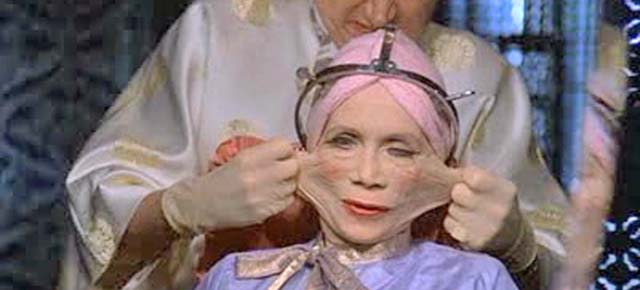A brief exchange in the back of last week’s issue of New Scientist asks: “I understand that the lines and sagging skin we acquire as we age are due to the sun and gravity. If I lived in a space station in zero or microgravity away from the sun, would I stay looking young?” A perfectly innocuous, if even somewhat boring, question — but the answer, supplied by a reader from London, touches on some fascinating terrain.
“It is likelier,” someone named Antony David writes in response, “that you would end up looking like a featureless bag of fat and fluid with porous bones and spindly attachments where your limbs and head used to be because human bodies would be free to expand in any direction.”
Still not all that surprising — we’ve already seen, for example, that long-term space missions might actually make the human heart turn into a sphere. In fact, this just sounds like something out of WALL-E.

From WALL-E, courtesy Walt Disney Pictures/Pixar Animations Studios
But Mr. David continues: “In the hands of a competent surgeon,” he writes, “facelifts and injections of bacterial toxins can compensate for the stretching, and tissue implants can restore volume,” and though he is referring here to our earthbound colleagues, his answer nonetheless conjures up extraordinary, dream-like visions (or perhaps they’re just dystopian) of interstellar surgical wards full of bloated astronauts being artificially reshaped to look, once again, more like our gravitationally specific notion of human bodies.
Every year or so, as part of some new ritual of outer passage, astronauts would thus go under the knife to be sculpted back into their old nostalgic human form. Neurologically stunted by the abnormal growth of their skulls, these offworld travellers inject bacterial toxins, stuff themselves full of tissue implants, and even stretch their bones through the use of well-placed cuffs, tourniquets, and neck rings, all to prevent those “spindly attachments” from becoming mere evolutionary throwbacks, just useless and floppy appendages that true astronauts would probably be better off without.
The future of spacesuit gear suddenly becomes awesomely speculative, closer to designing clothing for a potentially highly deformed human species; even anticipatory clothing for future bodily shapes becomes a design possibility, with structural garments engineered both to contain and encourage new bodily forms that might emerge after a long enough stay in microgravity.
Even if we remain relatively staid in our extrapolation, it’s not hard to imagine a scenario more like advanced Under Armour for astronauts, where strategic compression gear — equal parts daily clothing and medically necessary prosthetic exoskeleton — is used to maintain some visibly recognisable human form, lest deep space travellers bulge, fatten, or otherwise distend themselves into spheres considered somehow non-anthropological.
Of course, as our New Scientist commenter points out, “such operations can do nothing about the loss of tone or muscular function in general,” but that shouldn’t stop us from considering future procedures by which human beings might nostalgically maintain their corporeal identity after a long enough time in space.
Engaging in a form of live, self-directed taxidermy, these astronauts plump themselves up not with disciplined weight-lifting but through obscure new forms of plastic surgery developed specifically and only for humans who long ago left the earth behind.

From Brazil, courtesy Universal Studios
So is this going to happen? Well, probably not, I’d say — but I don’t think that’s the most interesting question here.
What’s interesting, I think, is the premise: a scifi vision of some weird emerging race of neurologically stunted future “humans” who only resemble the species they once came from due to increasingly elaborate, virtuoso acts of plastic surgery. They race through the interstellar void — stuffed, injected, and face-lifted across the universe — performing medical rituals meant to recall some lost human form, a bodily template to which all future astronauts and their offspring will nostalgically aspire. [New Scientist]
Lead picture: stefanolunardi/Shutterstock
